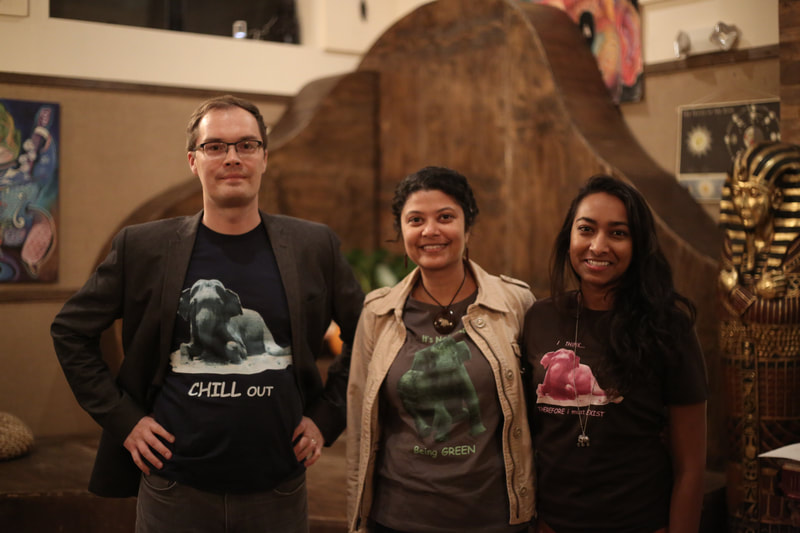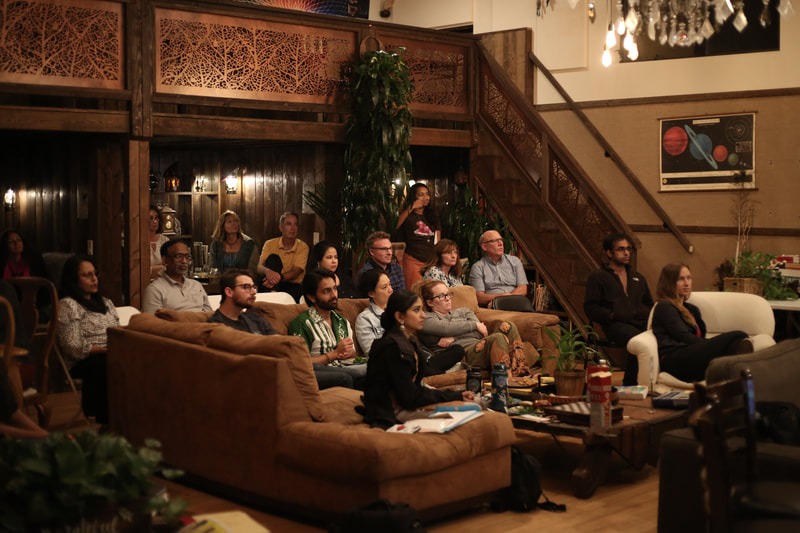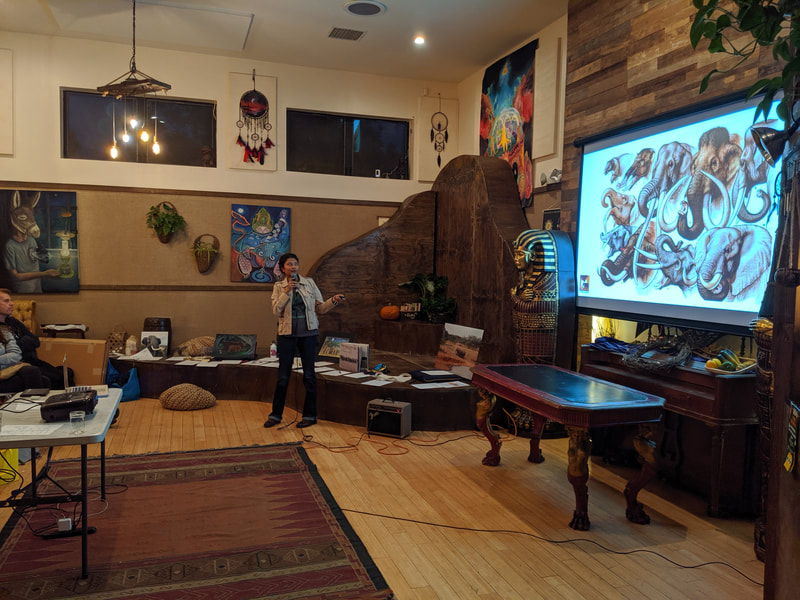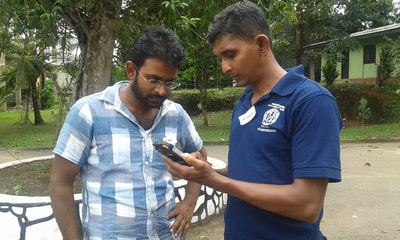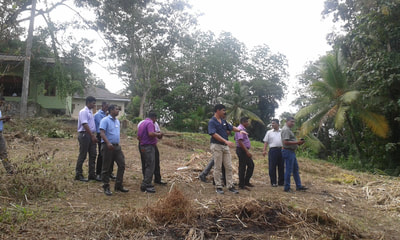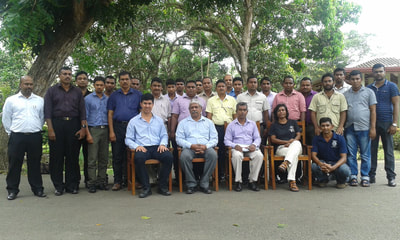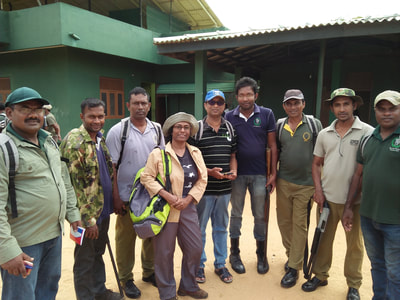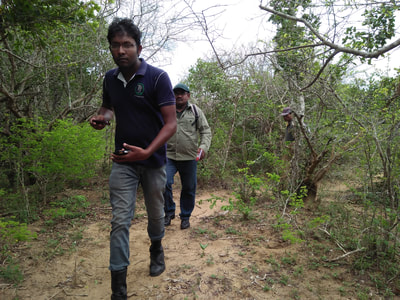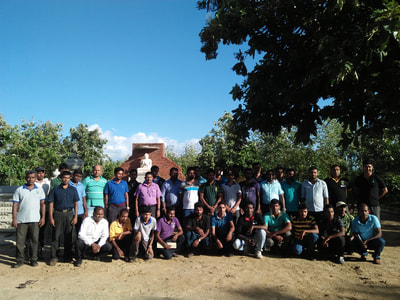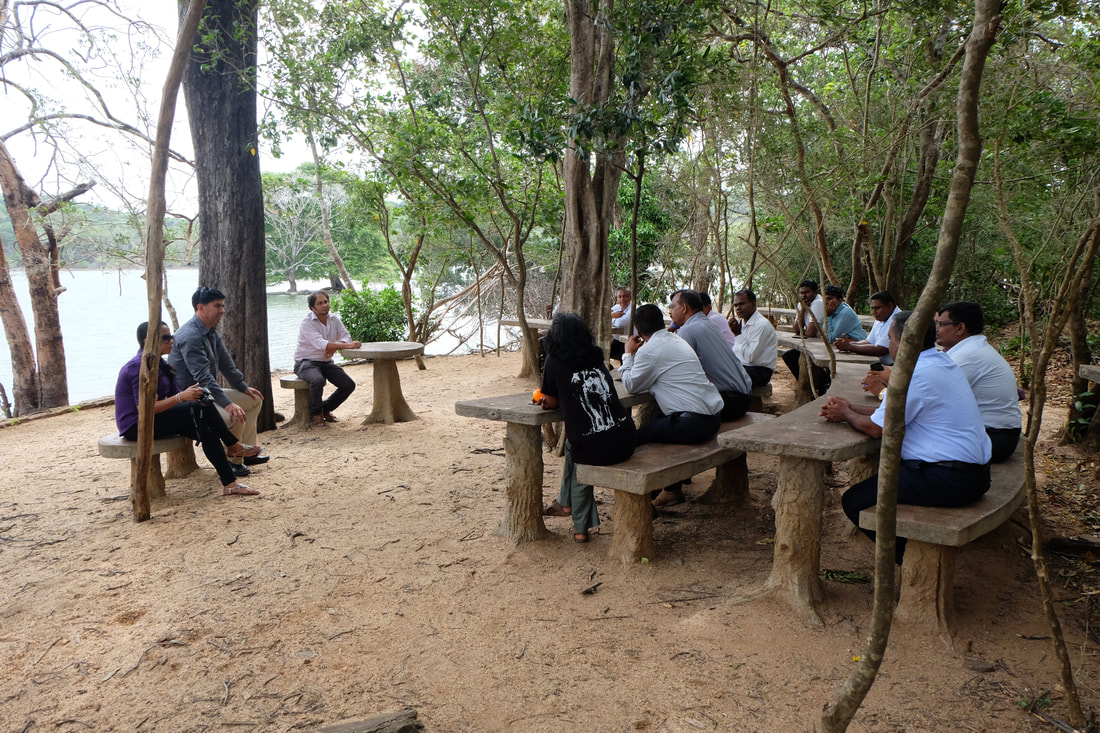An EVEning with Elephants
November 2nd 2019, Eve Encinitas
November 2nd 2019, Eve Encinitas
|
A benefit event featuring documentary film screening followed by Q & A with Dr. de Silva and a specially choreographed performance by classical dancer Sukanya Kumar.
Guests were also able to bid on various elephant-themed items available for silent auction. The event space was generously donated by EVE Vegan Eats, in Encinitas California. Other sponsors included Del Mar Photography, Naiad Soap Arts, Hera Hub, and local artist Kathy Chin. Special thanks to Udara Abeysekera for event planning, and her cadre of volunteers! Interested in hosting an Evening with Elephants ? Contact us. |
Animal Conservation and Civil Discourse Panel
March 2018, Earl Warren College, UC San Diego
March 2018, Earl Warren College, UC San Diego
|
|
|
This public panel discussion hosted by Earl Warren College at the University of California San Diego, in collaboration with Sea World, The San Diego Zoo, and the Scripps Institution of Oceanography. The panel included Dr. de Silva from T&L and Actress Shannon Elizabeth, founder of Animal Avengers. The conversation covered a range of topics regarding the intersection of animal conservation and welfare issues, with an emphasis on how to achieve constructive dialogue.
Photos courtesy of Earl Warren College, UCSD.
Photos courtesy of Earl Warren College, UCSD.
Strengthening Wildlife Law Enforcement
August & September 2017, Sri Lanka
August & September 2017, Sri Lanka
In partnership with the Wildlife Conservation Society and EFECT, officers of the Department of Wildlife Conservation, Sri Lanka, were trained to use SMART software to help them organize their field patrols more efficiently, along with gathering evidence and combating illegal activities.
Workshop on Evidence-Based Conservation
21-22 June 2016
|
A workshop for officers of the Department of Wildlife Conservation of Sri Lanka was held to discuss what constitutes evidence-based conservation, planned jointly by the department and EFECT, and hosted at the National Wildlife Training Center in Gritihale.
Topics ranged from disease to wildlife conflict mitigation, wildlife population survey techniques, protected area monitoring and patrolling. Speakers included both local and foreign researchers and practitioners from several nonprofits including the Wildlife Conservation Society (WCS) and the World Wildlife Fund. This workshop was conducted with support from Trunks & Leaves and the US Fish & Wildlife Asian Elephant Conservation Fund. We are grateful for all partners who made this workshop a success! Read more on the blog > |
Workshop On Behavior & Conservation
14-15 March 2016, San Diego, USA
|
We were among the participants of a workshop to prioritize research questions integrating behavioral research with applied conservation, led by Drs. Alison Greggor, Oded Berger-Tal, and William Sutherland and held at the Institute for Conservation Research of San Diego Zoo Global. This exercise brought together academic researchers as well as wildlife managers to identify the key areas in which behavioral research could contribute to conservation practice, and set the agenda for future work. T&L is pleased to have contributed to this workshop, which was facilitated and supported by Colorado State University and San Diego Zoo Global.
|
Elephant Landscapes
4 November 2015, Denver USA
|
|
A special Digital Earth planetarium dome presentation with Dr. Shermin de Silva at the Denver Museum of Nature and Science.
Five to seven million years ago, two species emerged on a common landscape among savannahs of Africa. One was among the largest land mammals, the ancestor of modern elephants. The other was an upright walking ape, who would eventually give rise to its most feared hunter - homo sapiens. Eventually both lineages would spread out of Africa and occupy diverse environments unlike any their ancestors had experienced, and even play a role in shaping these very landscapes. The paths of elephants and humans have been linked since the dawn of our species. This is our story. As we look to the future, we will ask: can we continue to live side-by-side? Tracing the history of elephants and humans out of Africa, we learn about how the paths of our species have crossed using geographic data and imagery. |
An Evening with Elephants
December 21st 2013, Randall Museum, San Francisco
December 21st 2013, Randall Museum, San Francisco


